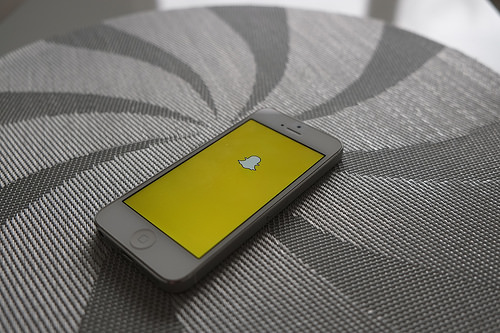 NEWS
NEWS
 NEWS
NEWS
 NEWS
NEWS
This week, Digital Trends reported that Snapchat, Inc. has 75 percent of all messaging traffic in the United Kingdom–beating Facebook, WhatsApp and Google. But that statistic may not be as impressive as it sounds.
Since the Snapchat app is built to share images and videos, it is bandwidth intensive when compared to its primarily text and emoji competitors. This means that Snapchat traffic is not equivalent to its competitors, as a Snap may require many times the amount of data of a text based message. A metric like total messages sent, or total time on app would resolve this discrepancy and provide more accurate data.
Unfortunately, it’s these metrics that help put social platforms on the map, and 75 percent of messaging in the market dominated by the so-called “millennials” that brands get all hot and bothered over is enough that advertising professionals must now give some consideration to their advertising platform.
Snapchat started testing their video ads program last year, with the first ad promoting a horror film trailer aimed at younger audiences. Snapchat later ran down the Rolodex of brands who test every new advertising platform, eventually partnering with The Coca-Cola Company and Samsung Electronics, allowing those brands to run ads on Snapchat.
I haven’t heard the results of those tests, but since most agencies who cater to big brands focus on impressions over silly metrics like sales, I’m willing to bet the tests were successful, at least to some extent. Will those impression convert to product sales in any meaningful way?
Snapchat CEO, Evan Spiegel, is making the normal rounds to ad agencies in London, Los Angeles, and New York selling the grand vision of a millennial impression machine in an attempt to land deals with more powerhouse advertisers.
Large companies like Proctor and Gamble, Brown Forman and Pepsi are so readily available that impression marketing does offer a somewhat measurable value, and the big brands have the money to spin the big wheel and chance a sales lift.
There are still some problems that would keep big brands from jumping on board, as Social Media Today discusses in a recent post titled Snapchat and Advertisers: It’s Complicated. Concerns for advertisers with this new ad platform include the need to create vertical video content to take advantage of the platform and the stigma of the app’s history of being used for sexting.
But, beyond just those reasons, big brands may not jump on the Snapchat marketing bandwagon. A lot of other social platforms (Facebook, Twitter, Youtube and Pinterest) have really moved to make their platforms mom and pop shop friendly.
If I were building a digital ads platform right now, I wouldn’t give up on big brands with big checks, but becoming dependent on big money would cause me a little stress. Remember when General Motors Corporation stopped marketing on Facebook in 2012?
I have no doubt that both the bad press and the income hit from losing GM as an advertiser was part of the reason Facebook got their consumer-facing act in gear. Facebook made the self-serve Ads Create Tool very easy to use and simplified and improved the Boost Post button. In short, Facebook took things that advertising consultants such as myself, Jon Loomer and Marty Weintraub used to publicly mock and made them highly useful to smaller advertising. I wrote about this Facebook shift early this year in a blog post explaining the limited reasons I still use Power Editor (Facebook’s API-based tool to build ads).
Google Adwords, Twitter and the Linkedin ad platform also have the offer amazingly complex self-serve targeting and conversion optimization and do have a focus on the large brand money, but they also pander to smaller advertisers. It takes a lot of mom and pop shops to equal a big brand, but the industry has realized the risk in depending on the handful of billion dollar advertisers.
The question really is: If Snapchat cannot appeal to and keep the big money brands happy, do they have a shot at the smaller advertisers a hundred dollars at a time? Google, Facebook and Twitter have made great strides toward the small market advertising. Maybe Snapchat can as well. Or maybe Snapchat will be exactly what brands want–a portal into the eyes of the millennial market.
But if Snapchat can’t be one or the other, they will at least be proof of a venture-backed tech bubble.
THANK YOU